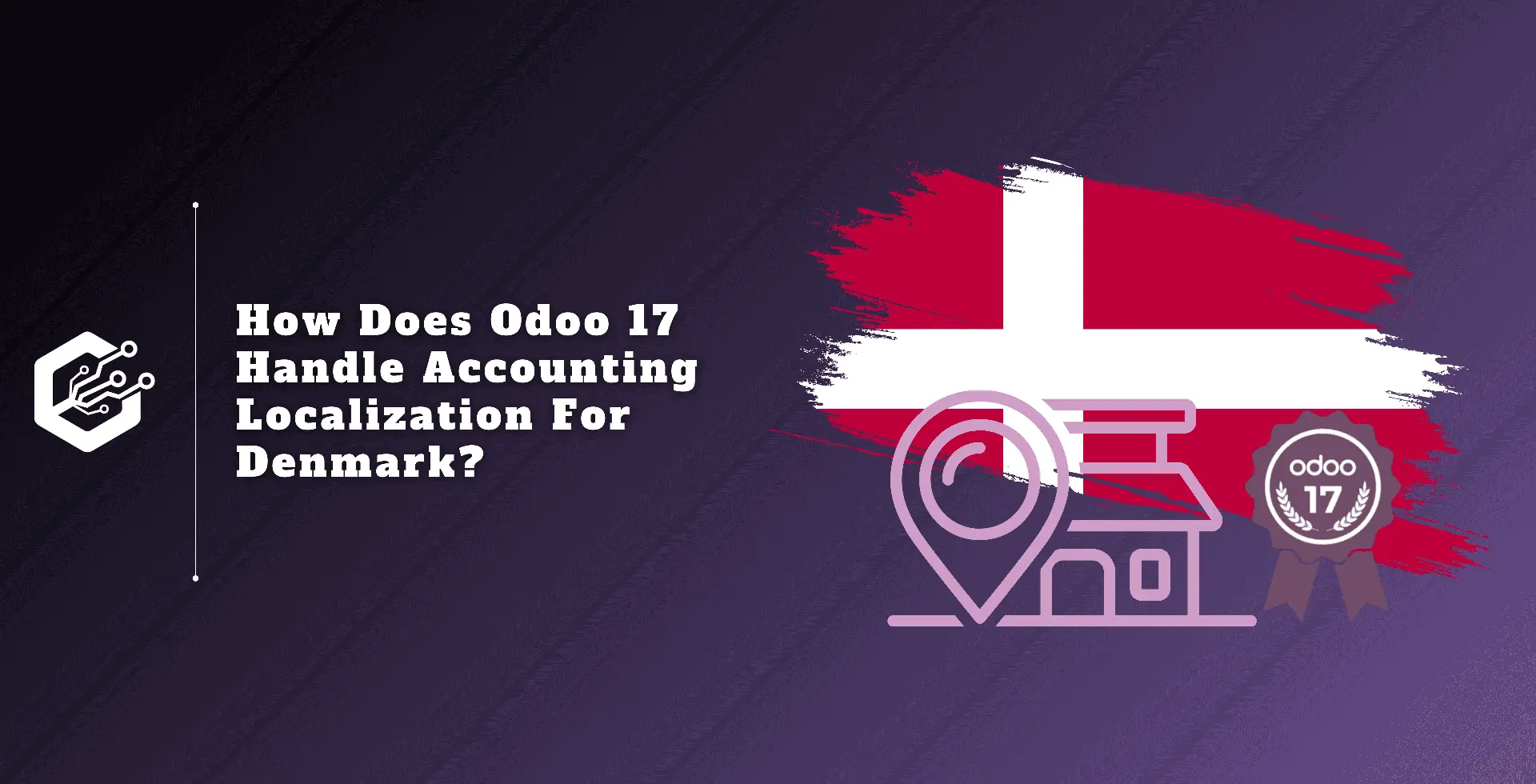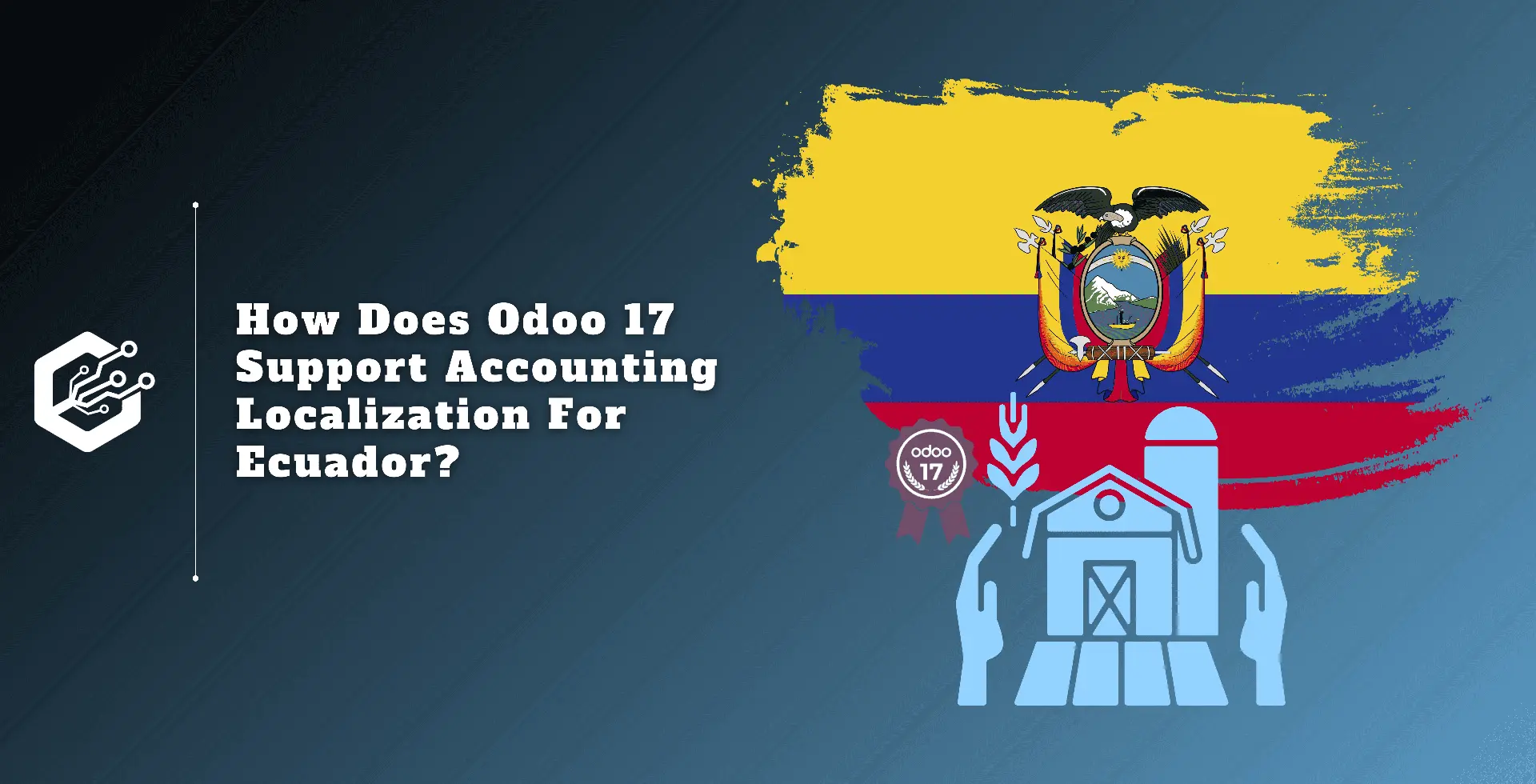What is Accounting Localization in Odoo 17?
Accounting localization is adapting the Odoo 17 accounting module to comply with a country’s specific tax laws, accounting standards, and reporting requirements. Odoo 17 makes use of fiscal localization packages to achieve this.
Localization packages include pre-configured features such as fiscal positions, tax groups, and charts of accounts that comply with your country’s accounting requirements.
Odoo 17 can compute taxes automatically by implementing existing tax regulations, eliminating the need for human work and the possibility of inaccuracy.
Localization applications frequently contain templates to assist you in creating reports that comply with your country’s legal standards.
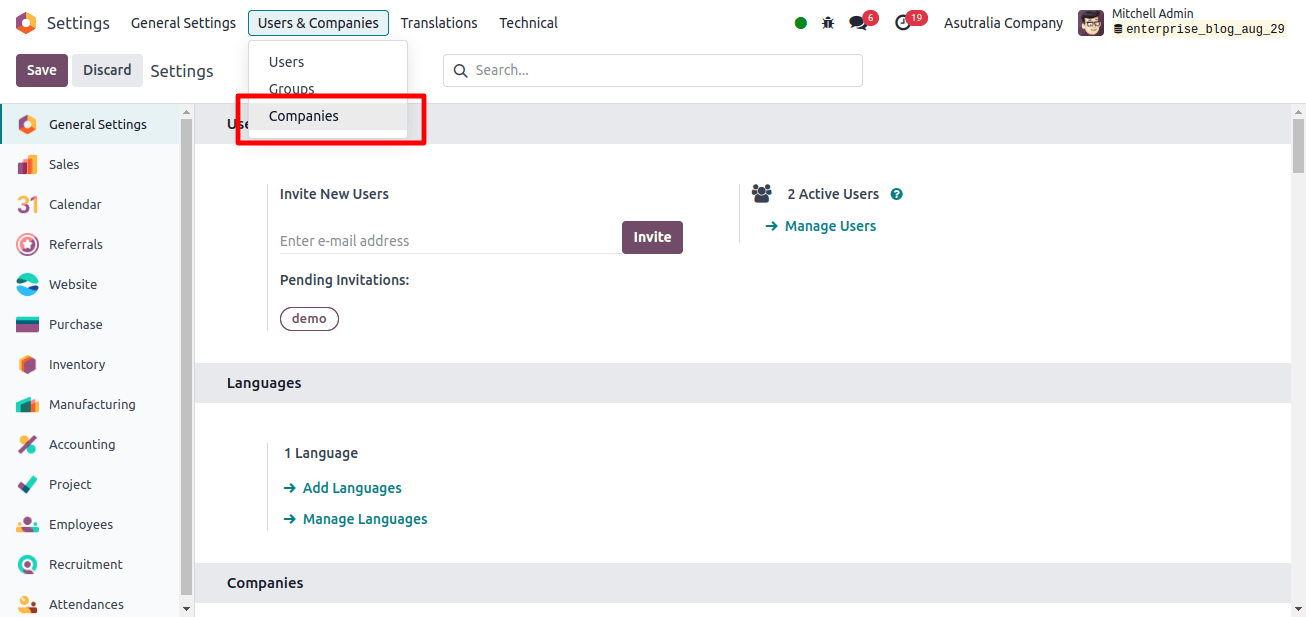
When you click the business submenu, you will see a list of already-created businesses. To start a new business, click the ‘New’ button.

When you click the New Button, you will be taken to a form where you can enter the details of the new company you are creating.
Provide the company’s name, address, country, and so on; however, when the nation is provided in that way, Odoo 17 will automatically set the company’s currency.
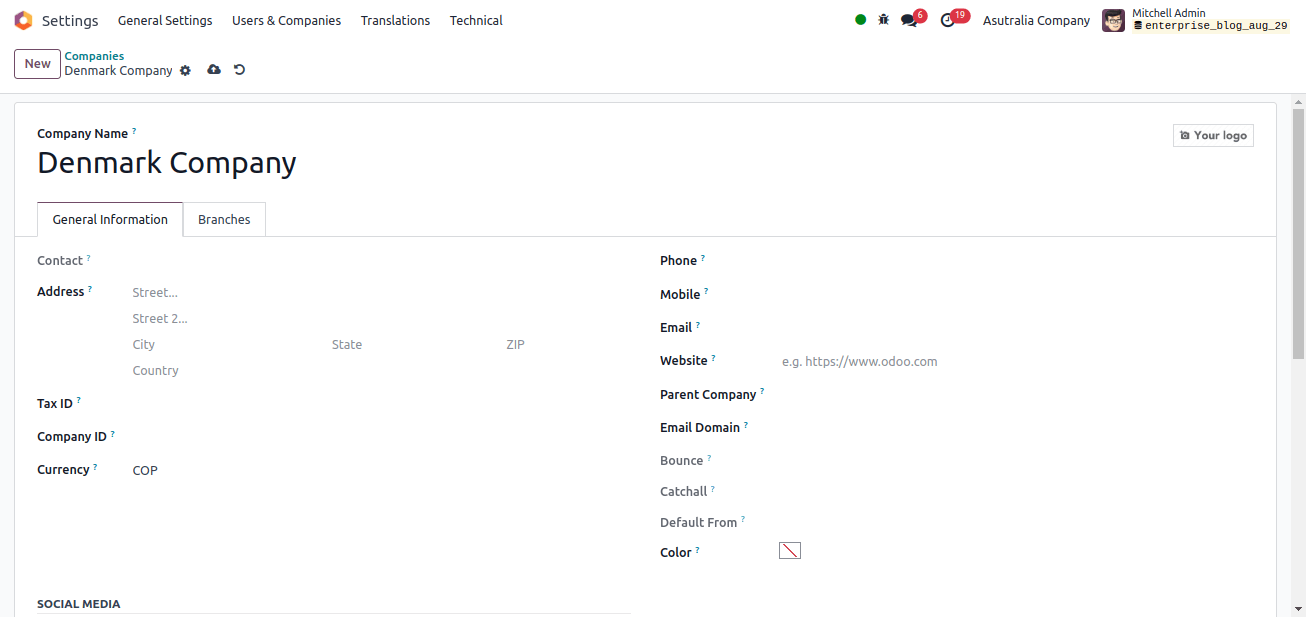
After storing the company information, you must set up the localization package for the company.
For setting up the localization package for the company, go to Odoo 17’s accounting module. Under the Fiscal Localization section of Configuration > Settings, you may configure the company’s localization package. Because you have established a corporation based in Denmark, select the Denmark package.
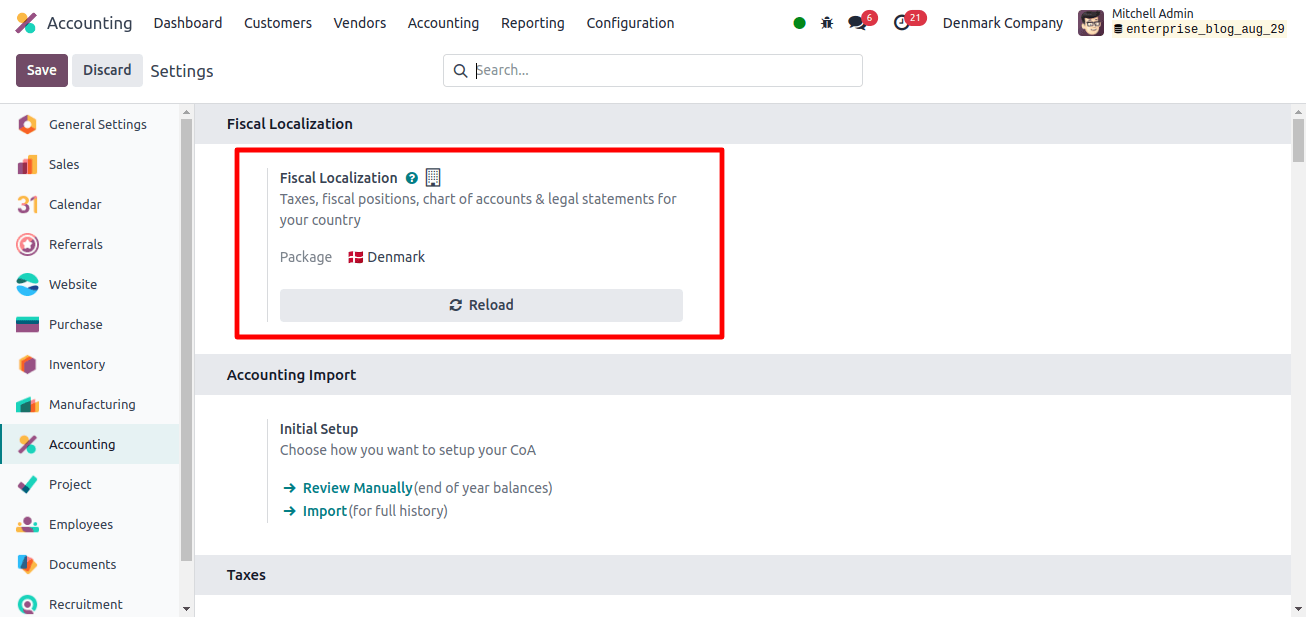
After you’ve chosen a package, click the save button and save your changes.
Denmark's unique localized business practices.
Go to the Taxes section under Configuration > Settings. There, you can see that the company’s default taxes are set automatically.
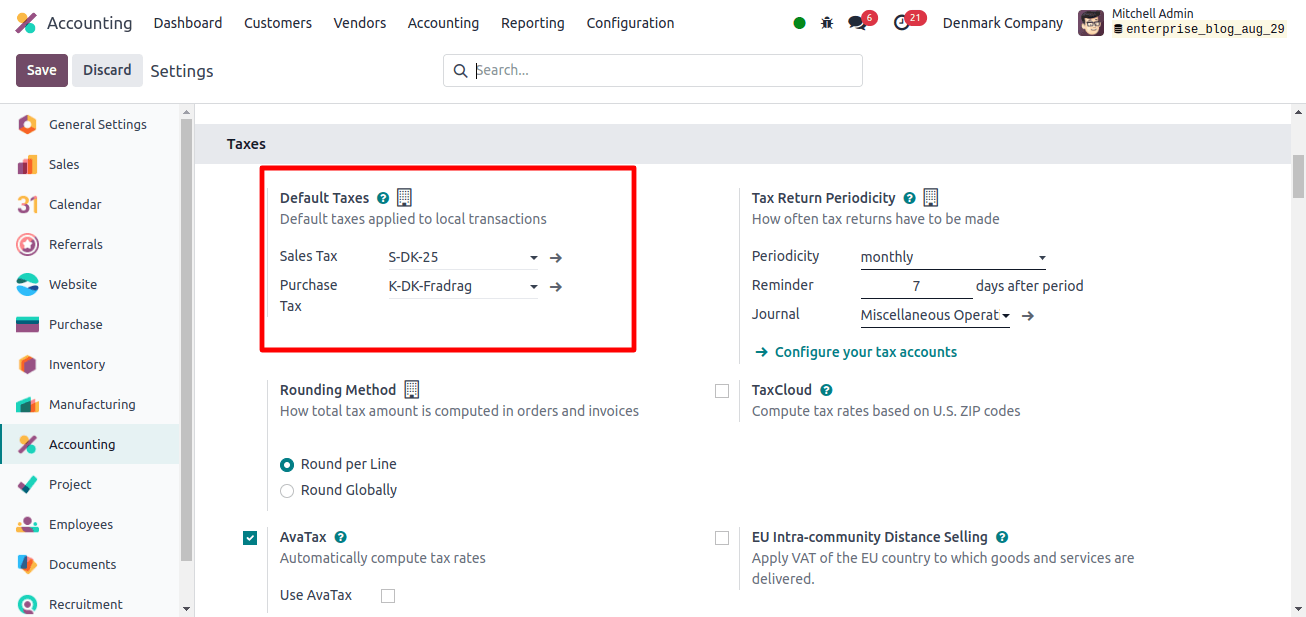
S-DK-25 and K-DK-Fradrag are the default sales and purchase taxes used by this company, as shown in the image above.
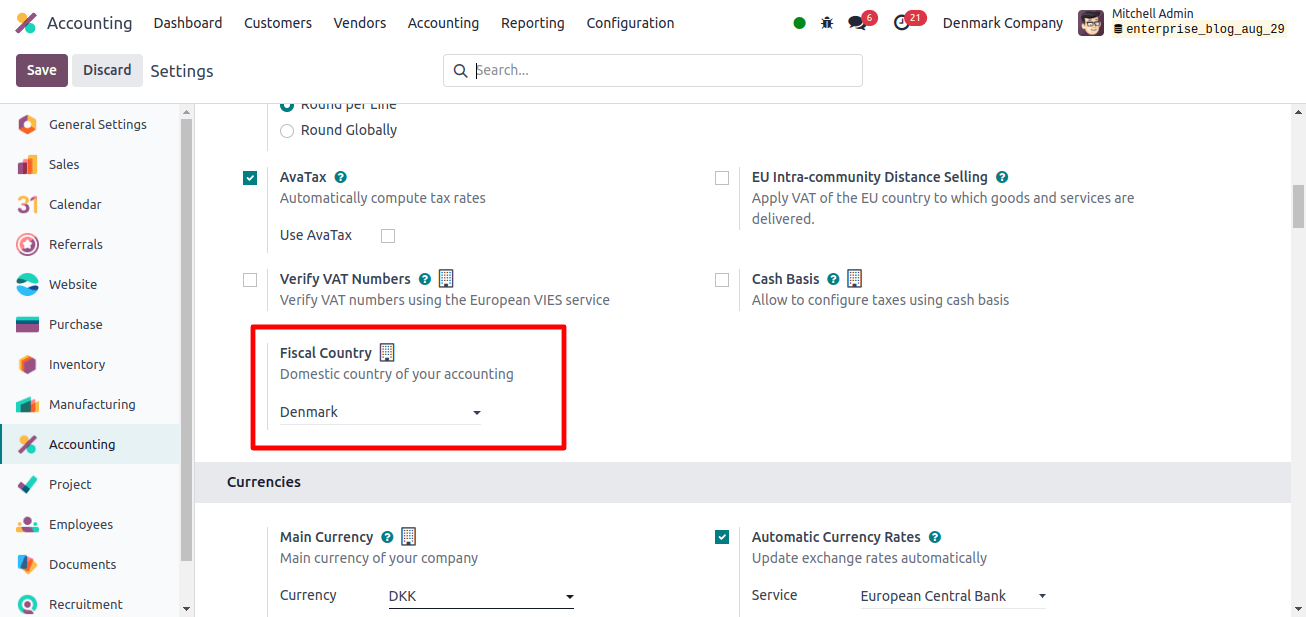
There is a fiscal country listed in the taxation section. You can specify the fiscal nation for this company, but when the package is saved, Odoo 17 automatically selects Denmark.

The company’s currency comes next. Denmark’s currency is the Danish Krone, represented as DKK. Odoo automatically configures the principal currency for the company as Danish Krone (DKK).

PEPPOL Electronic Document Invoicing is now an additional section in the accounting system configuration > Settings menu. PEPPOL is a standardized network known as Pan-European Public Purchase Online that allows cross-border e-invoicing secure and efficient for businesses.
It ensures smooth document sharing regardless of which accounting application each party employs. Automate invoice sending and receiving over the PEPPOL network, eliminating the chance of errors and arduous data entry associated with traditional paper bills, and so on. Next, we can navigate to the Accounting Apps reporting menu.
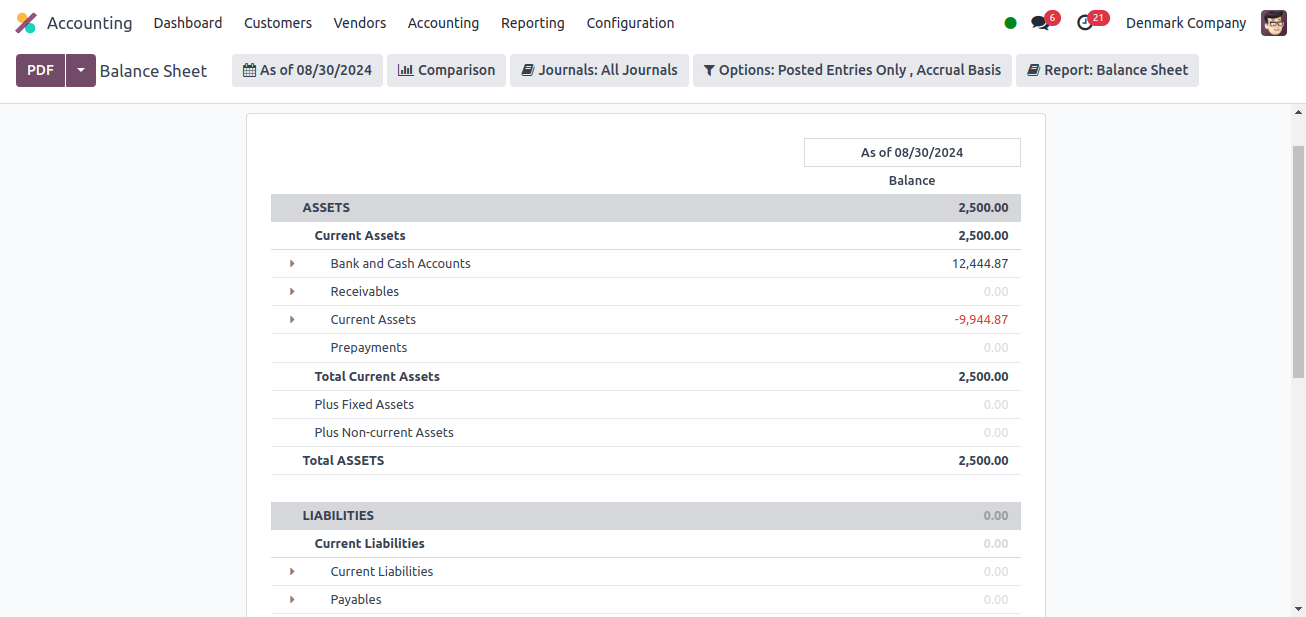
The balance sheet is a financial statement that summarizes a company’s financial condition on a specific date. It provides a summary of the company’s present assets, liabilities, and equity at that particular time.
This company’s balance statement includes intangible fixed assets, goodwill, acquired intangible fixed assets, tangible fixed assets, investment properties, and land and buildings, among other items. All assets, liabilities, and equity are then added to the company’s Balance sheet.
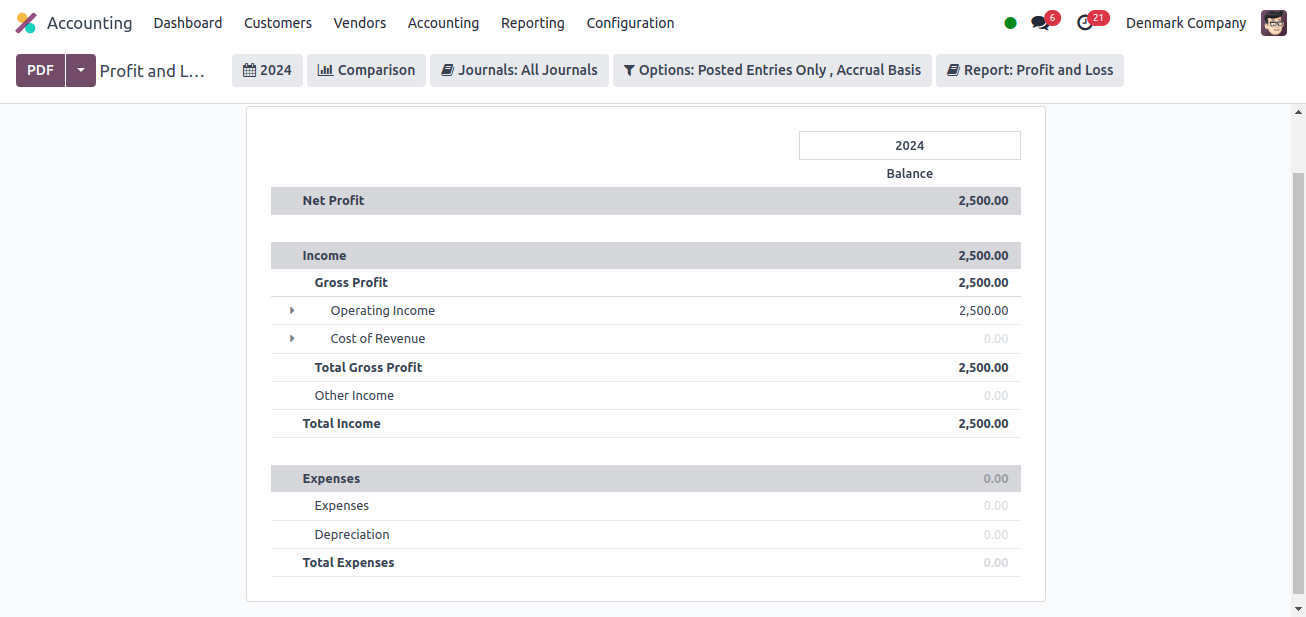
The next section contains the company’s profit and loss statement. To view the company’s profit and loss report, select the profit and loss sub-menu from the Reporting menu. It is an important financial report that provides an overview of a company’s profitability over a specific period.
It shows the net profit or loss after deducting the amount of money earned and expenses incurred within that period. The company’s profit and loss report includes current taxes, changes in deferred taxes, adjustments from the previous year, other taxes, and so on.
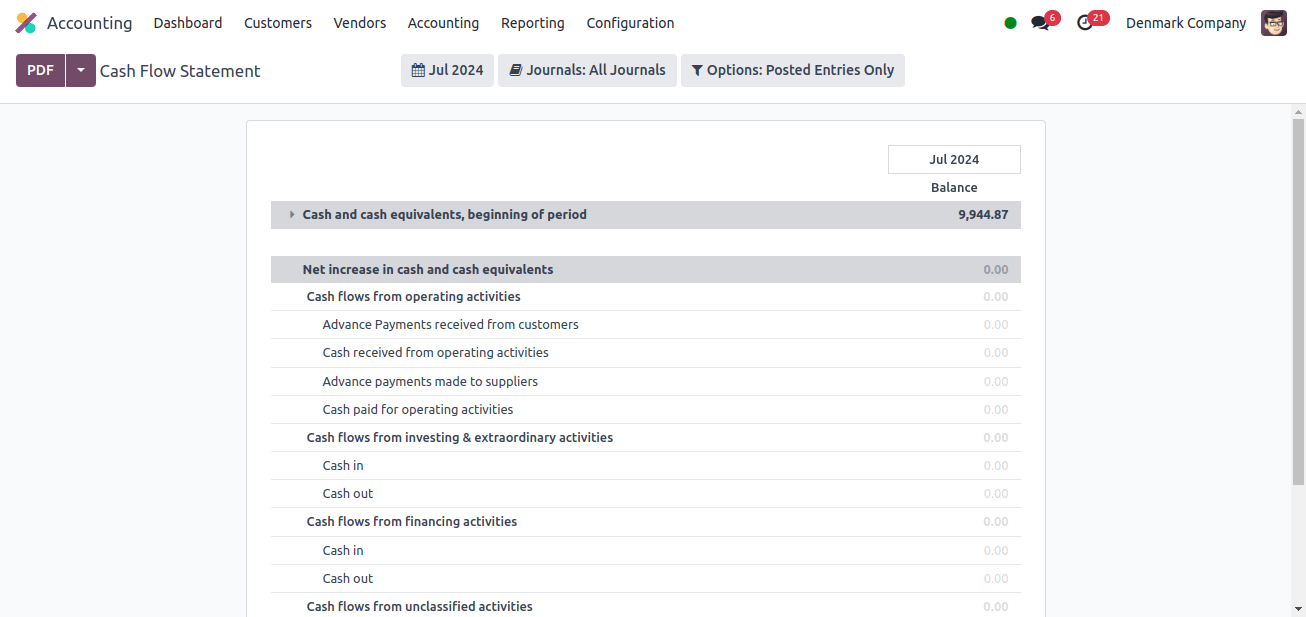
The cash flow statement is an Odoo 17 financial statement that shows a company’s cash inflows and outflows over a specific period. It helps determine how well a company generates and spends cash to pay its debts.
The company’s cash flow statement comprises cash flows from operating activities, cash flow from investing and exceptional activities, cash flows from financing activities, and cash flows from unclassified operations, among other items.
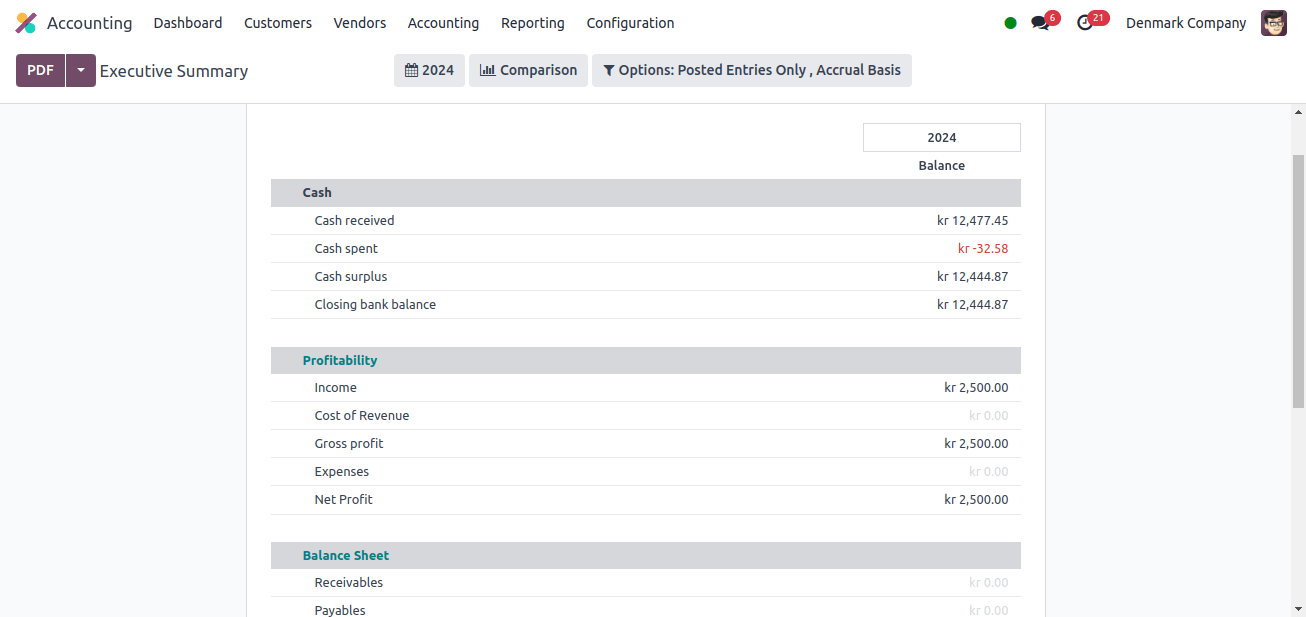
The executive summary is a management report that provides a concise review of your company’s most important financial facts.
It provides executives and decision-makers with a broad overview of the company’s financial performance without requiring them to read detailed financial reports.
This company’s executive summary includes a concise overview of cash, profitability, balance sheet, performance, position, and other supplemental information.
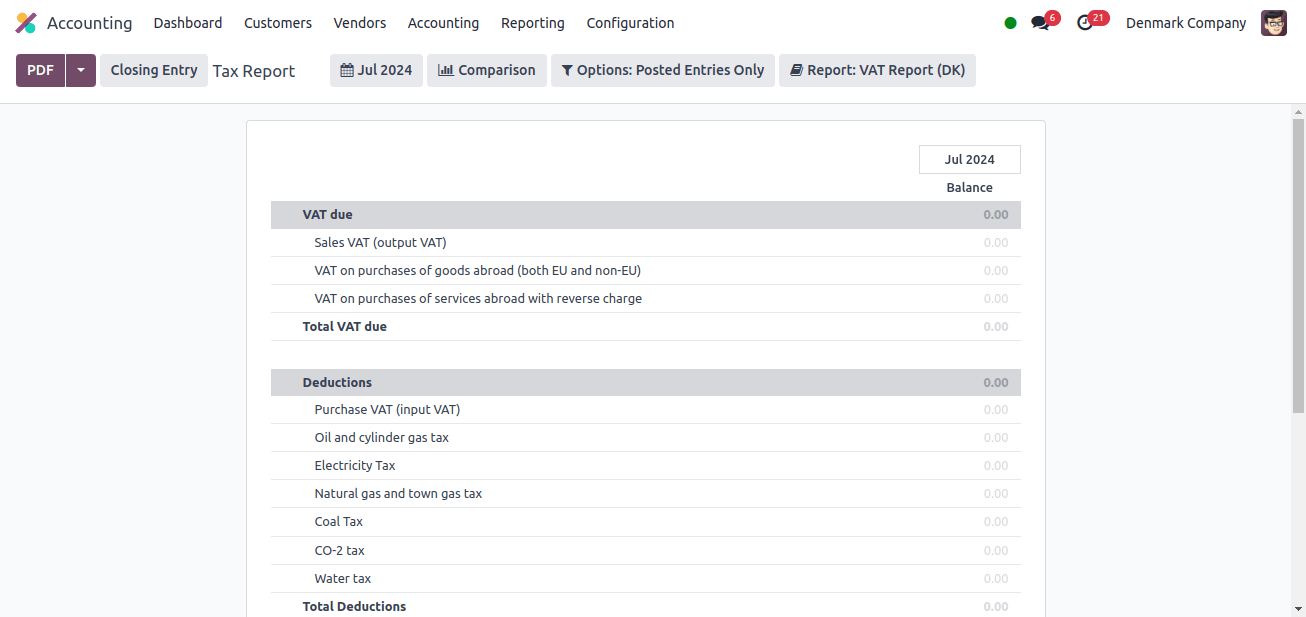
A tax report is an important document for submitting your taxes to the right authorities.
It calculates your tax liability and ensures that you comply with tax legislation by offering an overview of your company’s tax information at a given moment.
Businesses in Denmark’s tax reports include VAT dues and various deductions such as electricity tax, water tax, coal tax, etc.
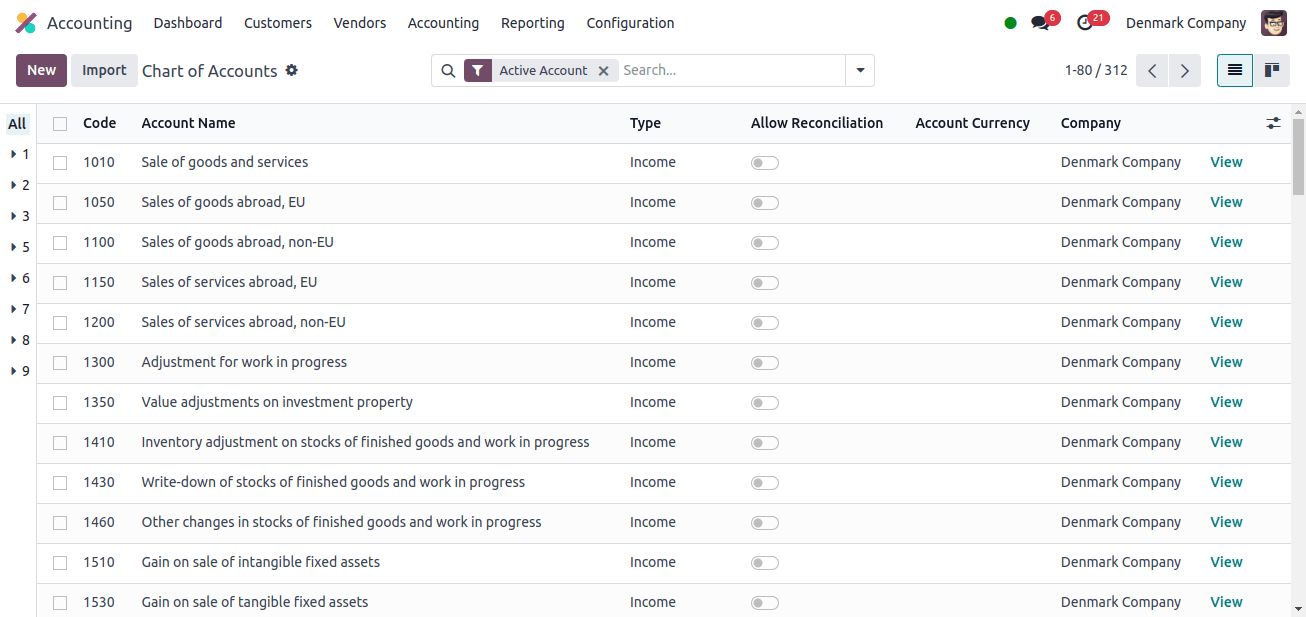
The chart of accounts in Odoo 17 is a list of all the accounts used in a company’s general ledger to record financial transactions.
Your business can create a strong foundation for proper financial record-keeping, perceptive reporting, and intelligent financial management by using Odoo 17’s chart of accounts effectively.
The above image shows the several accounts used by different businesses in Denmark. So people can use different accounts for different purposes.
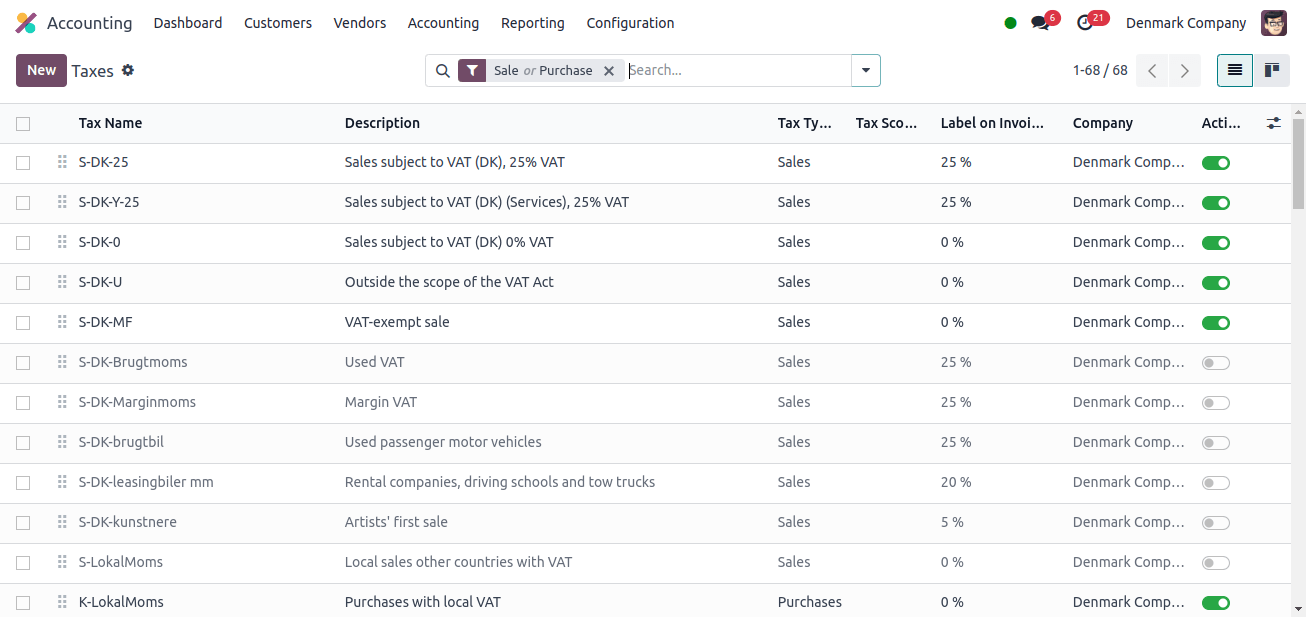
Taxes in different countries may differ. A tax is a financial obligation owed by individuals or businesses to the government, typically the federal or state government.
These taxes help to pay for a wide range of social initiatives and public services. S-DK-5, S-DK-Y-25, S-DK-U, S-DK-O, and other taxes are used by businesses in Denmark for a variety of purposes.

The image above shows the various fiscal mapping methods employed by Danish enterprises. Under the Fiscal positions supplied, various rules are developed and kept to map the company’s accounts.
All of these accounts will be automatically mapped by Odoo 17. So these are the primary differences and changes discovered for a Danish-based corporation.
So, with Odoo 17 accounting localization features created with Denmark in mind, Danish enterprises gain a slew of advantages. Odoo 17 provides an accounts chart that meets regulatory requirements and Danish accounting standards.
This ensures that your financial transactions comply with Danish standards. Odoo 17’s calculation takes into account Danish tax rules and regulations.
This avoids errors and streamlines tax filing by assuring the correct calculation of VAT (Value Added Tax) and other taxes applicable in Denmark.
